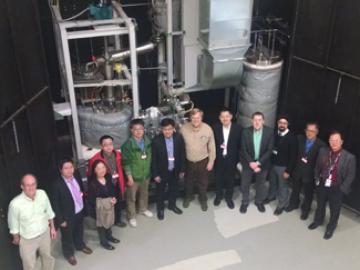
Polyphase wireless power transfer system achieves 270-kilowatt charge, s...



When it’s up and running, the ITER fusion reactor will be very big and very hot, with more than 800 cubic meters of hydrogen plasma reaching 170 million degrees centigrade. The systems that fuel and control it, on the other hand, will be small and very cold. Pellets of frozen gas will be shot int...


Representatives from the Oak Ridge National Laboratory (ORNL) and the Shanghai Institute of Applied Physics (SINAP) are meeting at ORNL this week as part of an agreement between the two institutions to work together on the advancement

